Home>diy>Building & Construction>What Systems Get Put To Work When Building A Home?
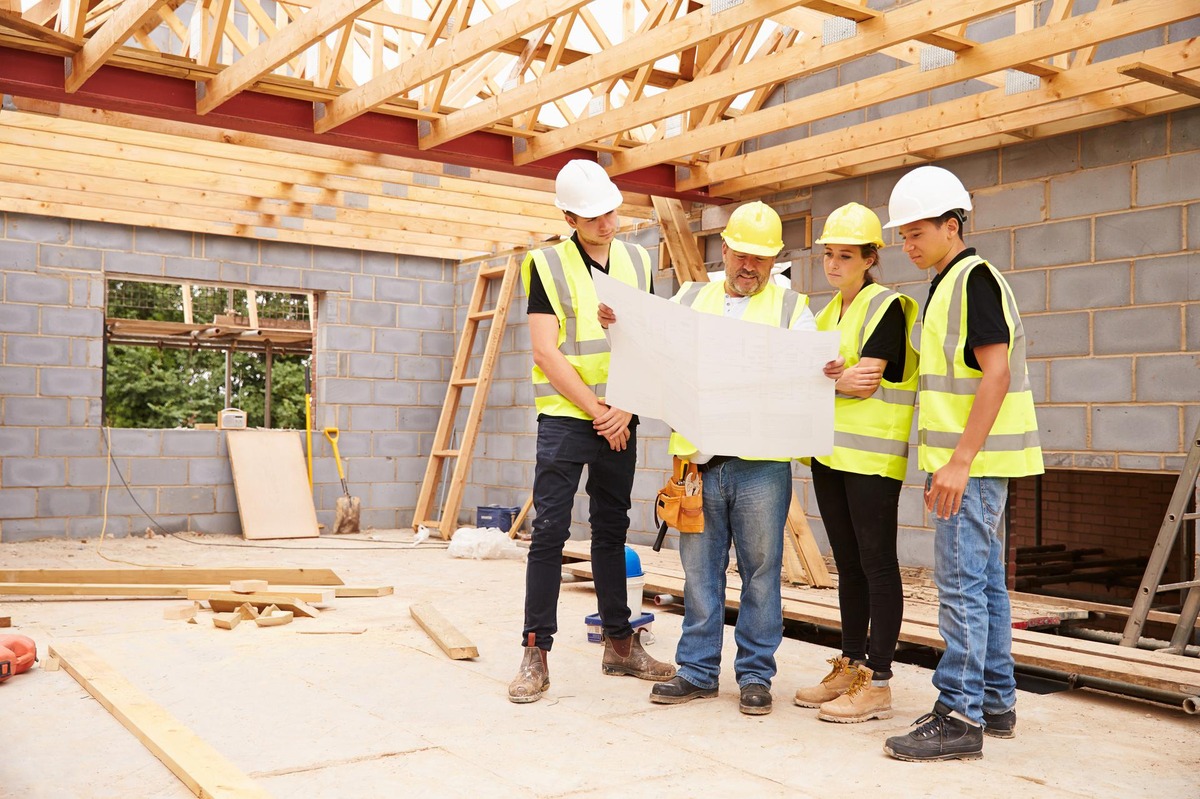

Building & Construction
What Systems Get Put To Work When Building A Home?
Modified: October 20, 2024
Discover the essential systems involved in the building construction process. From foundations and plumbing to electrical and HVAC systems, learn what it takes to build a home.
(Many of the links in this article redirect to a specific reviewed product. Your purchase of these products through affiliate links helps to generate commission for Storables.com, at no extra cost. Learn more)
Introduction
Building a home is a complex and intricate process that involves various systems working together to create a safe, comfortable, and functional living space. From the initial site preparation to the final inspections, every step in the construction process plays a vital role in ensuring a well-built home. In this article, we will explore the different systems involved in constructing a home and shed light on their importance.
Constructing a home requires careful planning and execution to ensure not only a structurally sound building but also an efficient and sustainable living environment. Each system plays a specific role, and when combined harmoniously, they create a cohesive structure that stands the test of time.
In the following sections, we will delve into the various systems that get put to work when building a home, ranging from site preparation to the final finishing touches.
Key Takeaways:
- Building a home involves a harmonious collaboration of various systems, from site preparation to final inspections, ensuring a safe, functional, and aesthetically pleasing living space.
- Each step in the construction process, including foundation, framing, roofing, plumbing, electrical, and finishing systems, plays a vital role in creating a well-built home that meets both functional and aesthetic needs.
Site Preparation
Before construction can begin, site preparation is crucial to set the stage for the building process. This involves clearing the land and making necessary modifications to ensure a level and stable foundation for the home. Site preparation typically includes tasks such as excavation, grading, and soil compaction.
Excavation involves removing any vegetation, rocks, or debris from the construction area. This step is essential to create a clean canvas for the construction process. Grading, on the other hand, involves leveling the ground to ensure proper drainage and prevent water accumulation near the foundation. This helps to minimize the risk of structural damage and water penetration. Finally, soil compaction is done to create a stable base for the foundation by compacting the soil to a specific density. This ensures that the foundation has a solid ground to rest upon.
In addition to these tasks, site preparation may also involve installing necessary utilities such as water, sewer lines, and electrical connections. These services are essential for a functioning home and must be carefully planned and installed to ensure convenience and efficiency for the homeowners.
Proper site preparation is critical as it sets the foundation for the entire construction process. It ensures that the site is ready for the subsequent stages of building, including laying the foundation, framing, and installing various systems.
It is important to note that site preparation must comply with local building codes and regulations. This ensures that the construction site meets safety standards and follows environmental guidelines. Hiring professionals experienced in site preparation is essential to ensure that all necessary steps are performed correctly, minimizing potential issues and delays during the construction process.
With the site properly prepared, attention can now turn towards the foundation systems, which play a fundamental role in providing a stable base for the home.
Foundation Systems
Foundation systems are the structural support of a home, serving as the base upon which the entire structure rests. These systems are responsible for transferring the weight of the building to the ground, ensuring stability and preventing settling or shifting over time.
There are several types of foundation systems commonly used in home construction, including slab-on-grade, crawl space, and basement foundations. The choice of foundation system depends on factors such as climate, soil conditions, and local building codes.
A slab-on-grade foundation is a concrete slab poured directly on the ground. It provides a solid, level surface for the home and is often the most cost-effective option. Crawl space foundations, on the other hand, elevate the home slightly off the ground, creating a space that allows for easy access to utilities and maintenance. This type of foundation is common in areas with high moisture levels or uneven terrain. Basement foundations, as the name suggests, provide a full underground level that can be used for storage or additional living space.
Regardless of the type of foundation, proper construction is essential to ensure stability and longevity. This includes proper excavation and site preparation, followed by the installation of footings or piers that provide support for the foundation walls. Reinforcing steel is often used to strengthen the foundation, preventing cracking and damage.
Proper drainage is also a crucial aspect of foundation systems. The inclusion of a moisture barrier, such as waterproofing membranes, helps to prevent water penetration and protect against potential water damage. Additionally, installing a drainage system, such as French drains or a sump pump, helps to divert water away from the foundation, further safeguarding against moisture-related issues.
Foundation systems are not only responsible for supporting the weight of the home but also for providing insulation and energy efficiency. Incorporating insulation materials, such as rigid foam or insulation boards, helps to reduce heat loss or gain through the foundation walls, improving energy efficiency and reducing utility costs.
Overall, foundation systems are the backbone of a home’s structural integrity. They provide stability, support, and protection against environmental factors, ensuring a safe and secure living space for homeowners. With the foundation in place, the construction process can move on to the framing systems, which form the skeleton of the home.
Framing Systems
Framing systems form the structural skeleton of a home, providing support and shape to the entire structure. These systems are responsible for creating the framework that withstands the weight of the building, as well as external forces such as wind and seismic activity.
The most common type of framing system used in residential construction is wood frame construction. This method involves using wood beams, columns, and studs to create the framework of the home. Wood frame construction is popular due to its versatility, cost-effectiveness, and ease of construction. It allows for flexibility in design and can accommodate various architectural styles.
The process of framing begins with the construction of the exterior walls. This involves erecting vertical studs at regular intervals, placing them between the bottom plate and the top plate. Horizontal beams, known as headers, are installed above doorways and windows to provide support for the structure above. Sheathing, usually made of plywood or oriented strand board (OSB), is then attached to the exterior walls to provide additional strength and stability.
Once the exterior walls are in place, the construction of the roof system can begin. This typically involves the installation of trusses or rafters, which provide the framework for the roof. Trusses are pre-fabricated triangular structures that are lifted and secured onto the walls, while rafters are installed one by one. The roof sheathing is then attached to the trusses or rafters to complete the roof structure.
In addition to the walls and roof, framing systems also include the floor systems. Floor joists, typically made of wood or engineered wood products, are installed to create a sturdy platform for the floors. Subflooring, such as plywood or OSB, is then attached to the joists to provide a solid base for the flooring material.
Framing systems require precise measurements and careful construction to ensure the structural integrity of the home. Building codes dictate the spacing and size of the framing members to meet safety standards. Additionally, proper installation techniques, including secure fastening and bracing, are crucial to prevent structural issues and ensure the durability of the home.
Once the framing systems are in place, the next step is to install the roofing systems, which protect the home from the elements and provide insulation and ventilation.
Roofing Systems
Roofing systems play a vital role in protecting a home from the elements and maintaining its structural integrity. They provide insulation, ventilation, and aesthetic appeal while safeguarding against rain, wind, snow, and other environmental factors.
There are various types of roofing systems available, each with its own advantages and suitability for different climates and architectural styles. Some common roofing materials include asphalt shingles, metal roofing, clay or concrete tiles, and slate. The choice of roofing material depends on factors such as budget, durability, aesthetics, and local weather conditions.
Asphalt shingles are one of the most popular and affordable roofing options. They come in a wide range of styles and colors, providing versatility and ease of installation. Metal roofing, on the other hand, offers exceptional durability and longevity, making it an ideal choice for areas prone to harsh weather conditions.
Clay or concrete tiles are often chosen for their aesthetic appeal and ability to withstand extreme weather conditions. They are known for their durability and provide an elegant and timeless look to a home. Slate roofing, while more expensive, is highly regarded for its beauty, longevity, and fire resistance.
The installation process for roofing systems involves several steps. It begins with the installation of the roof decking, which provides a solid base for the roof covering. This can be made of plywood or oriented strand board (OSB). Next, underlayment materials, such as felt or synthetic materials, are installed to provide an additional layer of protection against water infiltration.
Once the underlayment is in place, the roofing material is installed. This can involve laying asphalt shingles, securing metal panels, or interlocking clay or concrete tiles. Proper installation techniques, including correct overlapping and fastening, are essential to ensure a watertight and durable roof.
In addition to the primary roofing materials, other components are included in the roofing system to ensure proper insulation and ventilation. This includes the installation of insulation materials in the attic space to improve energy efficiency and temperature control. Roof vents and soffit vents are also installed to provide adequate air circulation and prevent moisture buildup, which can lead to mold and rot.
Regular inspections and maintenance are crucial to ensure the longevity and effectiveness of the roofing system. Periodic inspections can identify any damage or potential issues, allowing for timely repairs and preventing further damage to the home.
With the roofing system complete, attention turns to the installation of plumbing systems, which provide essential water supply and drainage throughout the home.
Read more: What Happens When Insulation Gets Wet
Plumbing Systems
Plumbing systems are an integral part of any home, providing essential water supply and drainage for daily activities. They consist of a network of pipes, fixtures, and fittings that ensure the smooth flow of water and waste throughout the home.
The plumbing system is divided into two main categories: the water supply system and the drainage system. The water supply system brings clean, potable water into the home, while the drainage system removes wastewater and sewage.
The water supply system starts with a main water line that connects the home to the municipal water supply or a private well. From there, the water is distributed to different areas of the house through a network of pipes. These pipes are typically made of copper, PEX (cross-linked polyethylene), or PVC (polyvinyl chloride).
Within the home, fixtures such as faucets, showers, toilets, and appliances like washing machines and dishwashers are connected to the water supply system. Valves and shut-off devices are installed to control the flow of water and allow for maintenance or repairs when needed.
The drainage system carries wastewater and sewage away from the home. Pipes and fittings made of materials like PVC or cast iron are used to transport the waste to the main sewer line or a septic system. Vent pipes are also installed to allow for the release of harmful gases and prevent the plumbing system from becoming clogged or damaged.
Proper installation and maintenance of the plumbing system are crucial to prevent leaks, water damage, and contamination. Plumbers follow local building codes and regulations to ensure that the system is installed correctly and meets safety standards.
Aside from the main water supply and drainage systems, additional plumbing systems may be installed in specific areas of the home. This includes the installation of gas lines for gas-powered appliances, such as stoves, ovens, and water heaters. Irrigation systems for outdoor landscaping may also be included to provide water to plants and gardens.
Regular maintenance is essential to keep the plumbing system in good working condition. This includes periodic inspections for leaks, clogs, and damaged pipes. It is also important to winterize the plumbing system in cold climates to prevent frozen pipes and potential bursts.
With the plumbing systems in place, attention turns to the installation of electrical systems, which power the home and provide lighting, heating, and other electrical needs.
Electrical Systems
Electrical systems are an essential part of modern homes, providing power for lighting, appliances, heating, cooling, and various other electrical needs. These systems consist of a complex network of wiring, outlets, switches, and panels that distribute electricity throughout the home.
The electrical system begins with the main electrical service panel, also known as the breaker box or fuse box. This panel receives electricity from the utility grid or an alternative power source, such as solar panels or a generator. The panel contains circuit breakers or fuses that control the flow of electricity to different areas of the home.
From the main panel, electrical wiring is routed through walls, ceilings, and floors to various rooms and areas of the home. The wiring is typically made of copper or aluminum and is installed inside conduit or protected by sheathing to prevent damage.
Within each room, outlets and switches are installed to provide access to electricity. Outlets allow for the connection of electrical devices, while switches control the flow of electricity to lighting fixtures or other appliances.
Electrical systems are designed to meet the specific power needs of a home. This includes the installation of dedicated circuits for high-power appliances such as stoves, ovens, air conditioners, and dryers. Ground fault circuit interrupters (GFCIs) and arc fault circuit interrupters (AFCIs) are also included in areas where water and electricity may come into contact, such as bathrooms and kitchens, to provide added safety against electrical shocks and fires.
Safety is a paramount concern in electrical systems. The installation of smoke detectors, carbon monoxide detectors, and fire alarms is necessary to protect the occupants of the home. Grounding systems are also implemented to provide a safe path for electrical currents in the event of a fault, diverting the current away from people and sensitive electronic devices.
Proper installation and maintenance of electrical systems are essential to prevent issues such as electrical shocks, fires, and power surges. Electrical work should always be performed by licensed electricians who adhere to local building codes and safety regulations.
Regular inspections and maintenance, including testing and replacing worn-out components, are necessary to ensure the electrical system’s functionality and safety. It is also important to be mindful of electrical consumption to promote energy efficiency and reduce utility costs.
With the electrical systems in place, attention turns to the installation of HVAC systems, which provide heating, ventilation, and air conditioning for the home.
HVAC Systems
HVAC (Heating, Ventilation, and Air Conditioning) systems are responsible for maintaining a comfortable and healthy living environment inside the home. These systems control temperature, humidity, and air quality, ensuring optimal comfort for the occupants.
Heating systems are designed to keep the home warm during cold weather. Common heating systems include furnaces, boilers, heat pumps, and radiant heating. Furnaces burn fuel such as natural gas or oil to generate heat, while boilers heat water to produce steam or hot water for distribution. Heat pumps extract heat from the outside air or the ground and transfer it indoors. Radiant heating systems use electric cables or water-filled pipes to heat the floors or walls, providing efficient and comfortable warmth.
Ventilation systems supply fresh air to the home and remove stale air. They help maintain a healthy indoor environment by reducing pollutants, odors, and excess humidity. Mechanical ventilation systems, such as exhaust fans, actively remove air from bathrooms, kitchens, and other areas with high moisture or pollutant levels. Natural ventilation, such as opening windows and using vents and air ducts, can also help circulate fresh air.
Air conditioning systems, or cooling systems, regulate the temperature and humidity inside the home during hot weather. The most commonly used air conditioning systems include central air conditioning, ductless mini-split systems, and window units. These systems use refrigerants to cool the air and circulate it throughout the home, ensuring a comfortable indoor climate.
HVAC systems require proper installation, maintenance, and regular servicing to ensure optimal performance and energy efficiency. Properly sized equipment, well-sealed ductwork, and insulation contribute to the efficiency of the system. Air filters should be regularly cleaned or replaced to maintain good indoor air quality and prevent system malfunctions.
In addition, technology advancements have led to the development of smart HVAC systems. These systems utilize automation, sensors, and connectivity to optimize energy efficiency and provide seamless control over temperature and air quality.
With HVAC systems in place, attention turns to the installation of insulation systems, which play a crucial role in energy efficiency and maintaining a comfortable indoor environment.
When building a home, various systems are put to work, including the foundation, framing, electrical, plumbing, heating, ventilation, and air conditioning (HVAC), and insulation systems. Each system plays a crucial role in creating a safe and comfortable living space.
Insulation Systems
Insulation systems are essential components of a home, providing thermal resistance and preventing heat flow between the interior and exterior of the building. These systems help maintain a comfortable and energy-efficient living space by reducing heat loss during cold weather and heat gain during hot weather.
Insulation is typically installed in various parts of the home, including the walls, roof, floors, and even pipes. The insulation material acts as a barrier, slowing down the transfer of heat through conduction, convection, and radiation.
Common insulation materials include fiberglass, spray foam, cellulose, mineral wool, and rigid foam boards. Each material has its advantages and suitability for different areas of the home. Fiberglass insulation, for example, is widely used due to its affordability and ease of installation. Spray foam insulation provides excellent air sealing qualities and can be sprayed into hard-to-reach areas. Cellulose insulation is made from recycled materials and offers good thermal and sound insulation properties.
Roof insulation is particularly important as heat rises and can easily escape through an uninsulated roof. Attic insulation is commonly used to prevent heat loss in the winter and heat gain in the summer. It can be installed as loose-fill or batt insulation, depending on the specific requirements of the space.
Wall insulation helps to regulate indoor temperatures and reduce energy consumption. It is commonly installed during the construction phase, either as batts, blown-in, or foam insulation. Retrofitting exterior walls with insulation can also be done by drilling holes in the wall and injecting insulation material.
Floor insulation is crucial for homes with crawl spaces or unfinished basements. It helps to prevent heat loss through the floor, creating a more comfortable environment. Insulating pipes can prevent heat loss from hot water pipes and reduce the risk of freezing in cold weather conditions.
Proper installation of insulation is essential to ensure maximum effectiveness. Gaps, voids, and compressions in the insulation material should be avoided to maintain the desired thermal resistance. A properly insulated home can significantly reduce heating and cooling costs and improve overall energy efficiency.
In addition to thermal insulation, homes also require sound insulation to minimize noise transmission between rooms and from the outside. Soundproofing materials, such as acoustic panels or specialized insulation products, can be used to reduce noise levels within the home.
Insulation systems contribute to creating a more sustainable and environmentally friendly home by reducing energy consumption and carbon footprint. They provide long-term benefits in terms of improved comfort and energy savings.
With the insulation systems in place, attention turns to the installation of wall and ceiling systems, which provide the finishes and aesthetics to the interior of the home.
Wall and Ceiling Systems
Wall and ceiling systems play a significant role in the aesthetics, functionality, and overall appeal of a home’s interior. They provide the finishing touches that complete the visual design while offering practical benefits such as insulation, durability, and soundproofing.
When it comes to wall systems, there are several options available, including drywall, plaster, and paneling. Drywall, also known as gypsum board or sheetrock, is the most commonly used material. It consists of a gypsum core sandwiched between two layers of paper and provides a smooth, paintable surface for wall finishes. Plaster, on the other hand, is a traditional material that requires skilled craftsmanship for application. It offers a more textured and durable finish but is less commonly used in modern construction. Paneling, such as wood paneling or decorative wall tiles, adds visual interest and texture to the walls, creating a unique and personalized look.
Ceiling systems also come in a variety of materials and styles. Most commonly, ceiling systems include drywall, drop ceilings, and decorative ceiling tiles. Drywall is typically used for standard flat ceilings, providing a clean and seamless finish. Drop ceilings, also known as suspended ceilings, consist of a grid system with suspended tiles or panels. They offer the benefit of easy access to utilities and can be customized with different types of tiles for soundproofing or aesthetic purposes. Decorative ceiling tiles are often used in areas where a more visually striking design is desired, such as in entryways or living rooms.
In addition to the aesthetic considerations, wall and ceiling systems can offer insulation properties, enhancing energy efficiency and reducing sound transmission. Insulation materials, such as fiberglass or foam boards, can be installed within wall cavities or between ceiling joists to improve thermal performance and minimize noise transfer between rooms.
Proper installation and finishing techniques are crucial to achieving a high-quality look and ensuring the longevity of wall and ceiling systems. Drywall must be accurately measured, cut, and installed, with attention paid to proper joint taping and sanding for a seamless appearance. Plaster requires skilled craftsmanship to create smooth and uniform surfaces. Paneling needs careful alignment and installation to achieve a cohesive and visually appealing result.
In recent years, there has been a rise in the use of sustainable and eco-friendly materials for wall and ceiling systems. Recycled content, low VOC (volatile organic compound) paints, and renewable materials offer greener alternatives for construction, reducing environmental impact and promoting healthier indoor air quality.
Wall and ceiling systems not only serve a functional purpose by enclosing and defining interior spaces, but they also provide a canvas for creativity and personalization. The choice of materials, colors, textures, and decorative elements can greatly impact the overall ambiance and style of a home’s interior.
With the walls and ceilings completed, attention turns to the installation of flooring systems, which provide comfort and functionality while complementing the overall design of the home’s interior.
Flooring Systems
Flooring systems play a crucial role in the functionality, aesthetics, and overall ambiance of a home’s interior. They provide a comfortable and durable surface to walk on while enhancing the visual appeal of each room. Flooring options are diverse, ranging from hardwood and tile to carpet and laminate, each with their own advantages and considerations.
Hardwood flooring is a timeless and popular choice, offering a natural and warm look. It is available in various species, finishes, and plank sizes, allowing for a wide range of design possibilities. Hardwood floors can be refinished multiple times, providing long-lasting beauty and durability.
Tiles are another common flooring option, offering versatility in design and durability. Ceramic and porcelain tiles are popular choices for areas prone to moisture, such as bathrooms and kitchens. They are available in a vast array of colors, patterns, and textures, allowing for endless design possibilities.
Carpeting provides a soft and cozy surface, ideal for bedrooms and living areas. It offers warmth, comfort, and noise reduction. Carpets come in various materials, styles, and thicknesses, allowing homeowners to select the right carpet based on their preferences and needs.
Laminate and vinyl flooring have gained popularity due to their affordability, durability, and ease of maintenance. Laminate flooring mimics the look of hardwood or tile, while vinyl flooring offers a wide range of designs and is highly resistant to moisture and wear.
Each flooring system has specific installation requirements and considerations. Some flooring options require subfloor preparation, while others can be installed directly on top of existing flooring. Proper installation techniques ensure a level surface, stability, and durability. It is recommended to hire professional installers for the best results and to ensure compliance with manufacturer warranties.
Flooring systems also play a role in insulation and soundproofing. Underlayment materials, such as foam or cork, can be used to provide added insulation and reduce noise transmission between floors. This can enhance energy efficiency and create a quieter living environment.
Proper maintenance of flooring systems is essential to keep them looking their best. Regular cleaning, appropriate protective measures, and addressing any damages promptly can help prolong the lifespan of the flooring. Manufacturer guidelines and recommendations should be followed to ensure the proper care and maintenance of each flooring material.
With the flooring in place, attention turns to the installation of windows and doors, which provide natural light, ventilation, and access to the outdoors while enhancing the aesthetics and energy efficiency of the home.
Windows and Doors Systems
Windows and doors systems are essential components of a home, providing natural light, ventilation, security, and aesthetic appeal. They play a crucial role in creating a comfortable and functional living space while enhancing energy efficiency and overall design.
Windows allow natural light to enter the home, brightening up the interior and creating a welcoming atmosphere. They also provide views to the outside, connecting the indoor and outdoor spaces. Windows come in various styles, such as casement, double-hung, sliding, and picture windows. Each style offers unique benefits in terms of functionality, ventilation, and design flexibility.
In addition to natural light, windows also contribute to the energy efficiency of the home. Energy-efficient windows contain multiple panes of glass with insulating gas fillings, low-emissivity coatings, and thermal breaks. These features help to reduce heat transfer, keeping the home cool in the summer and warm in the winter. Properly sealed and weather-stripped windows also prevent air leaks, improving overall energy efficiency and reducing utility costs.
Doors serve as the main entry points to the home, providing security and access. Exterior doors come in a variety of materials such as wood, steel, fiberglass, and glass. Each material offers unique features such as durability, aesthetics, and insulation properties. Door styles can range from traditional panel doors to modern and sleek designs, allowing homeowners to choose what suits their personal taste and architectural style.
Interior doors serve to separate rooms and provide privacy. They are available in a range of styles and materials, from solid wood to hollow-core doors. French doors or sliding doors can be used to create a more open and flowing space between rooms.
Proper installation of windows and doors is crucial to ensure energy efficiency, security, and durability. Well-sealed and properly fitted windows and doors prevent drafts and air leaks, improving overall insulation and reducing energy consumption. Professional installation by qualified contractors is recommended to ensure a proper fit and seal.
In addition to the functionality and energy efficiency, windows and doors contribute to the aesthetics of a home. They can be customized with different finishes, hardware, and decorative options to complement the overall design. From traditional to contemporary styles, the choices are vast, allowing homeowners to create a cohesive and visually appealing look.
Regular maintenance is important to keep windows and doors in good condition. This includes cleaning glass and frames, lubricating hinges and locks, and inspecting for any signs of wear or damage. Prompt repairs and replacements are necessary to maintain the security and functionality of the windows and doors.
With windows and doors installed, attention turns to the exterior finishing systems, which protect and beautify the exterior of the home.
Exterior Finishing Systems
Exterior finishing systems are an integral part of a home’s construction, providing protection, durability, and aesthetic appeal to the outer walls. These systems not only enhance the exterior appearance of the home but also shield it from the elements, improving weather resistance and longevity.
One of the most common exterior finishing systems is siding. Siding materials can include vinyl, wood, fiber cement, and stucco. Each material offers different benefits regarding durability, maintenance requirements, and aesthetic options. Vinyl siding is known for its affordability and low maintenance, while wood siding provides a classic and natural look. Fiber cement siding is highly durable and resistant to rot, insects, and fire. Stucco is a popular choice for its versatility and ability to create a textured finish.
Exterior finishing systems also include cladding systems, which can be made of materials such as brick, stone, or synthetic stone veneer. These materials not only add beauty and character to the home but also provide additional insulation and protection against severe weather conditions.
In addition to siding and cladding, exterior finishing systems may also include trim and molding, which add architectural detail and visual interest to the home’s exterior. Trim can be made of various materials such as vinyl, wood, or PVC, and it serves to protect vulnerable areas of the home, such as corners and edges, while providing a finished look.
Proper installation of the exterior finishing systems is vital to ensure structural integrity and longevity. Professional installation is recommended to ensure proper techniques are followed, moisture barriers are installed, and adequate sealing against water infiltration is achieved. Regular maintenance, such as cleaning, repainting, or resealing, will help prolong the life of the exterior finishes and maintain their appearance.
The choice of exterior finishing systems can significantly impact the overall aesthetics and curb appeal of the home. It is important to consider the architectural style, regional climate, and personal preferences when selecting the materials and finishes. Harmonizing the exterior finishes with the surrounding landscape can create a cohesive and visually pleasing look.
Overall, exterior finishing systems not only protect the home from the elements but also contribute to its overall charm and value. With the exterior finishes complete, attention turns to the interior finishing systems, which provide the final touches to create a comfortable and functional living space.
Read more: When Will Sonos Work With Google Home?
Interior Finishing Systems
Interior finishing systems play a crucial role in transforming a house into a comfortable and aesthetically pleasing home. These systems provide the final touches to the interior space, creating a welcoming and functional environment for homeowners and their families.
One of the key components of interior finishing systems is wall finishes. This can include paint, wallpaper, and decorative techniques such as textured finishes or accent walls. Wall finishes add color, texture, and personality to each room, creating a cohesive design theme throughout the home. The choice of wall finish depends on personal preference, desired ambiance, and the overall design concept.
Ceiling finishes are another important aspect of interior finishing systems. Ceilings can be painted with various colors or designed with decorative elements such as crown molding, tray ceilings, or ceiling medallions. These finishes add depth, character, and visual interest to the space, tying the room together and creating a polished look.
Flooring, mentioned earlier as its own system, is also a critical component of interior finishing. The choice of flooring materials, such as hardwood, tile, carpet, or laminate, contributes to the overall style and functionality of each room. Flooring systems can be selected based on durability, ease of maintenance, and personal preferences, ensuring a comfortable and visually appealing living space.
Interior finishing systems also include fixtures and fittings, such as door handles, light fixtures, faucets, and cabinetry hardware. These details provide the finishing touches that elevate the design and functionality of each room. Hardware can accentuate the style of the home, whether it be modern and sleek or traditional and ornate.
Trim work, including baseboards, crown molding, and window casings, adds architectural detail and a finished look to the interior spaces. These elements serve as a transition between different surfaces and create a polished appearance.
Window treatments, including curtains, blinds, or shades, not only enhance privacy but also contribute to the overall design aesthetic. The choice of window treatments can complement the style of the room and provide light control, insulation, and privacy as desired.
The selection of interior finishing materials should consider both functionality and aesthetics. Additionally, it is important to ensure that the chosen materials comply with safety standards and regulatory requirements.
Interior finishing systems allow homeowners to put their personal touch on their living spaces, reflecting their individual tastes and lifestyle. By carefully selecting the appropriate finishes, homeowners can create a comfortable and visually pleasing environment that truly feels like home.
With the completion of interior finishes, the construction process nears its end, transitioning to final inspections and testing to ensure compliance with building codes and regulations, and to guarantee the safety and quality of the home.
Final Inspections and Testing
Final inspections and testing are crucial steps in the construction process, ensuring that the home meets all building codes, regulations, and safety standards. These inspections and tests are conducted to verify the quality of the workmanship and identify any potential issues that may need to be addressed before the home is deemed safe for occupancy.
The final inspections are typically conducted by local building authorities or independent inspectors. These professionals assess various aspects of the construction, including structural integrity, electrical systems, plumbing systems, HVAC systems, insulation, and fire safety measures. Their goal is to ensure that the construction has been carried out in compliance with the approved plans and that all systems are functioning as intended.
During the inspections, inspectors will thoroughly examine each area of the home, including the foundation, framing, roofing, walls, and interior finishes. They will check for any deficiencies, such as substandard materials, inadequate installations, or violations of building codes. If any issues are identified, they will be reported to the contractor or homeowner for rectification.
In addition to inspections, various tests may be carried out to ensure the performance and safety of the home. Examples of these tests include electrical system testing, plumbing pressure tests, air leakage tests, and soil compaction tests. These tests verify that the systems are functioning properly, and they provide peace of mind to the homeowners, knowing that their new home is built to high standards.
Once the inspections and testing are complete, and any necessary corrections or repairs have been made, a certificate of occupancy or completion may be issued. This certificate signifies that the home is safe and suitable for occupancy, and it may be required before the homeowners can move in or obtain financing.
It is important for homeowners to be present during the final inspections. This gives them an opportunity to understand the condition of their new home, ask questions, and address any concerns that may arise. It also provides an opportunity to learn about the proper maintenance and care of different systems and components in the home.
Final inspections and testing are critical to ensure that the home has been constructed with quality workmanship and in compliance with building regulations. By undergoing these checks, homeowners can have confidence in the safety, functionality, and longevity of their new home.
With the completion of final inspections and testing, the construction process will conclude, and homeowners can embark on the exciting journey of settling into their new home.
Conclusion
Building a home is a complex and intricate process that involves numerous systems working together to create a safe, comfortable, and functional living space. From site preparation to final inspections and testing, each step in the construction process plays a vital role in ensuring a well-built home that meets both functional and aesthetic needs.
Throughout this article, we have explored the various systems involved in constructing a home. Site preparation prepares the land and sets the stage for construction. Foundation systems provide a stable base, while framing systems create the structural framework. Roofing systems protect the home from the elements, and plumbing systems ensure water supply and drainage. Electrical systems power the home, while HVAC systems provide heating, ventilation, and air conditioning. Insulation systems improve energy efficiency and comfort, while wall and ceiling systems provide finishes and aesthetics. Flooring systems offer a comfortable and visually appealing surface, and windows and doors systems provide natural light, ventilation, and access to the outdoors. Exterior and interior finishing systems enhance the aesthetics and functionality of the home, and final inspections and testing ensure compliance with building codes and regulations.
It is important to note that every step in the construction process should be approached with careful planning and attention to detail. Hiring experienced professionals, adhering to building codes, and using quality materials are essential for a successful construction project. Regular maintenance and inspections are also crucial to ensure the longevity and safety of the home.
Building a home is not just about constructing a physical structure; it is about creating a space where memories are made, and lives are lived. It is about blending design, functionality, and craftsmanship to provide a haven for homeowners and their families.
In conclusion, constructing a home is a collaborative effort that requires expertise in various disciplines. The systems involved in building a home work together harmoniously to create a safe, comfortable, and beautiful living environment. With careful planning, proper execution, and attention to detail, a well-built home can provide years of comfort and happiness for homeowners.
Frequently Asked Questions about What Systems Get Put To Work When Building A Home?
Was this page helpful?
At Storables.com, we guarantee accurate and reliable information. Our content, validated by Expert Board Contributors, is crafted following stringent Editorial Policies. We're committed to providing you with well-researched, expert-backed insights for all your informational needs.
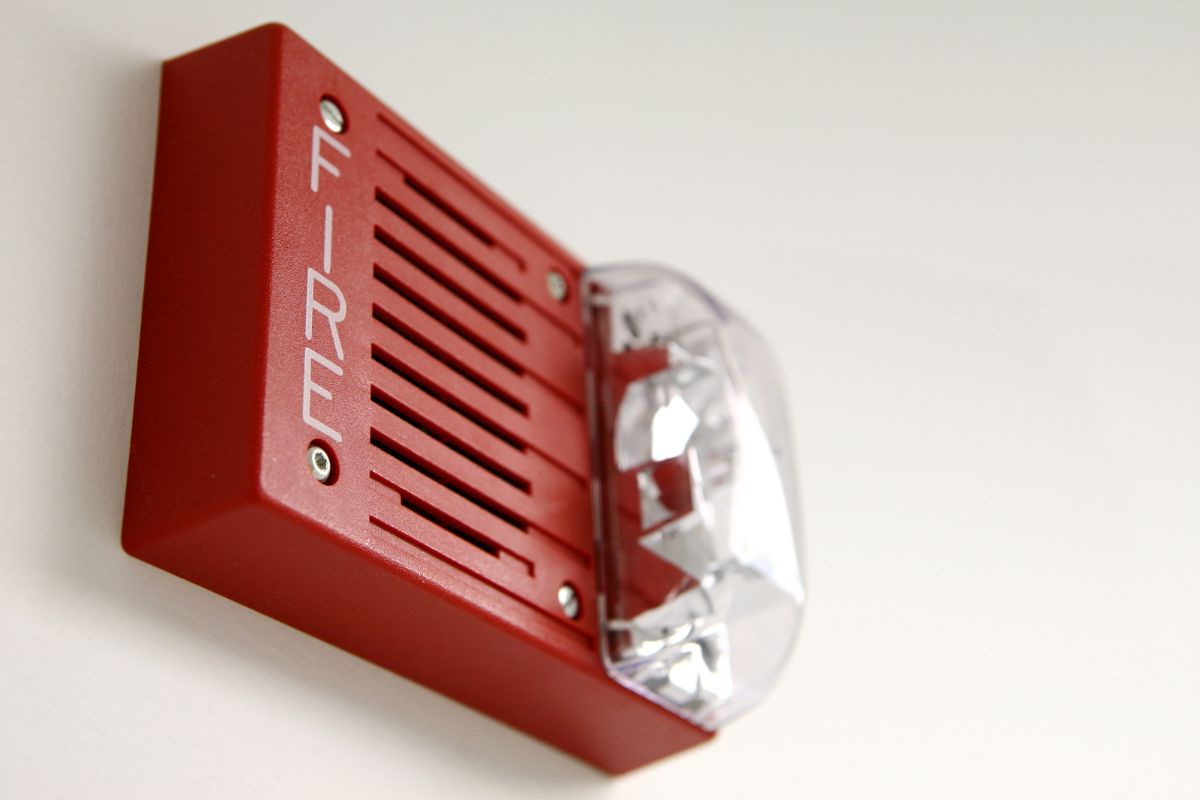

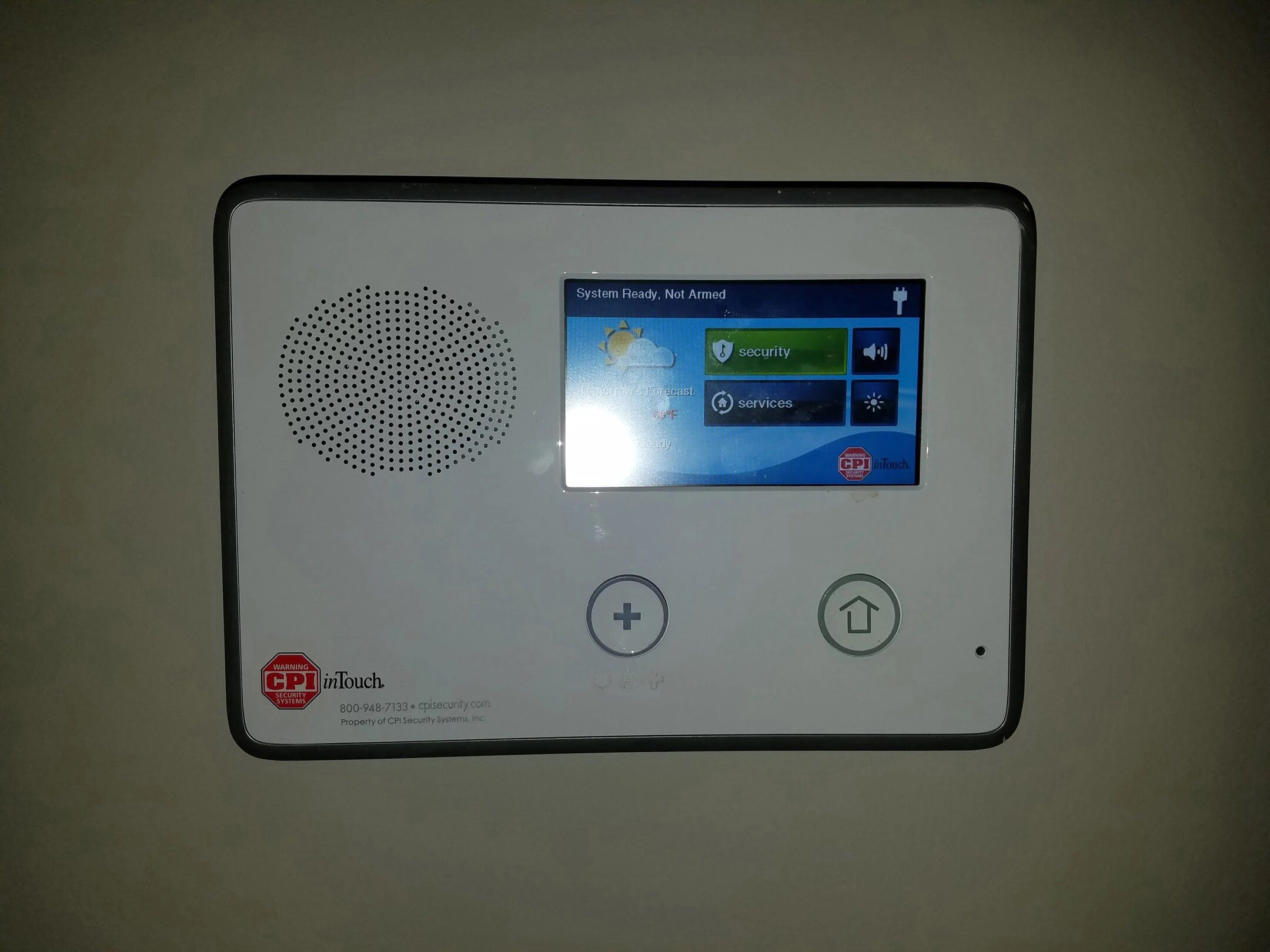







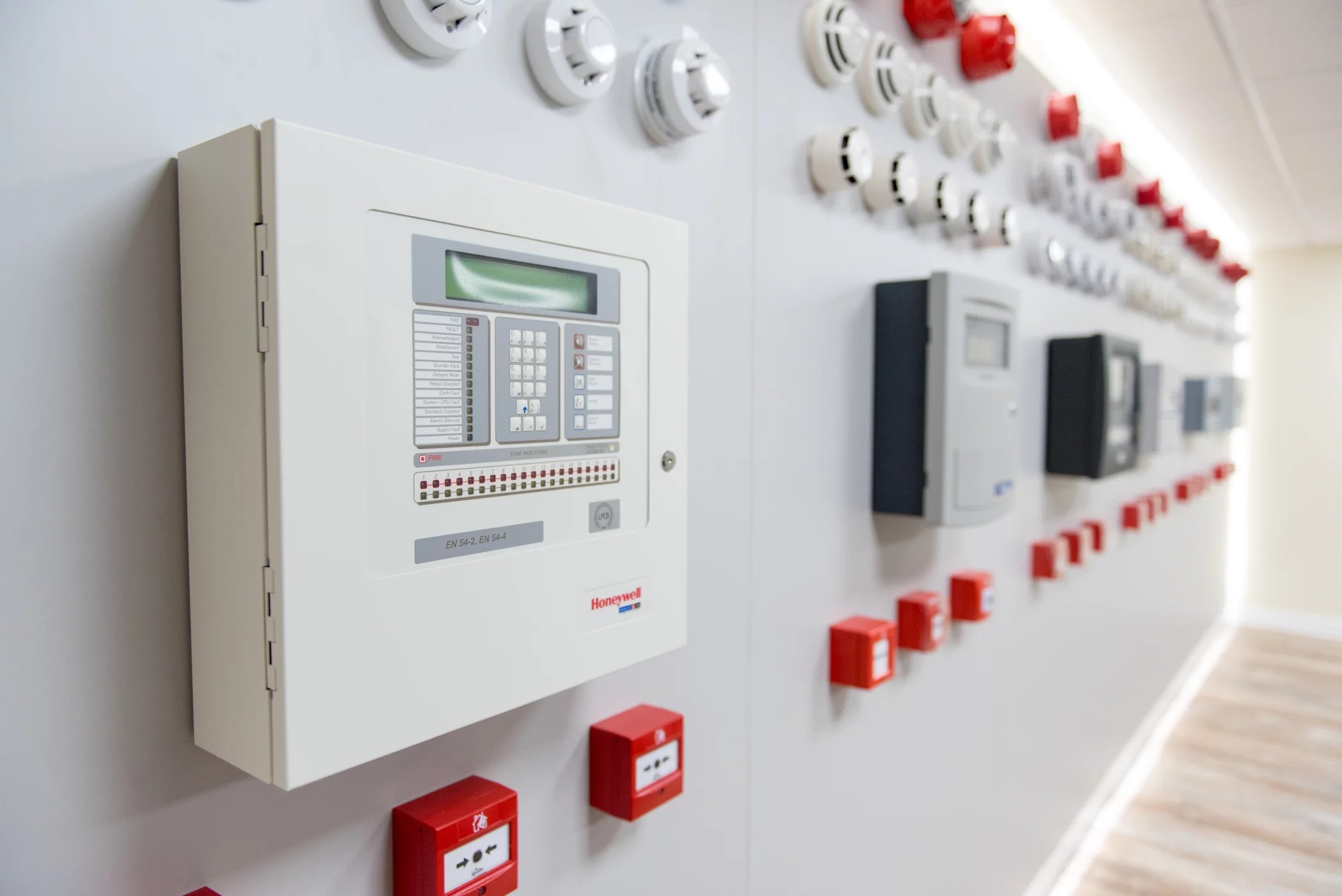
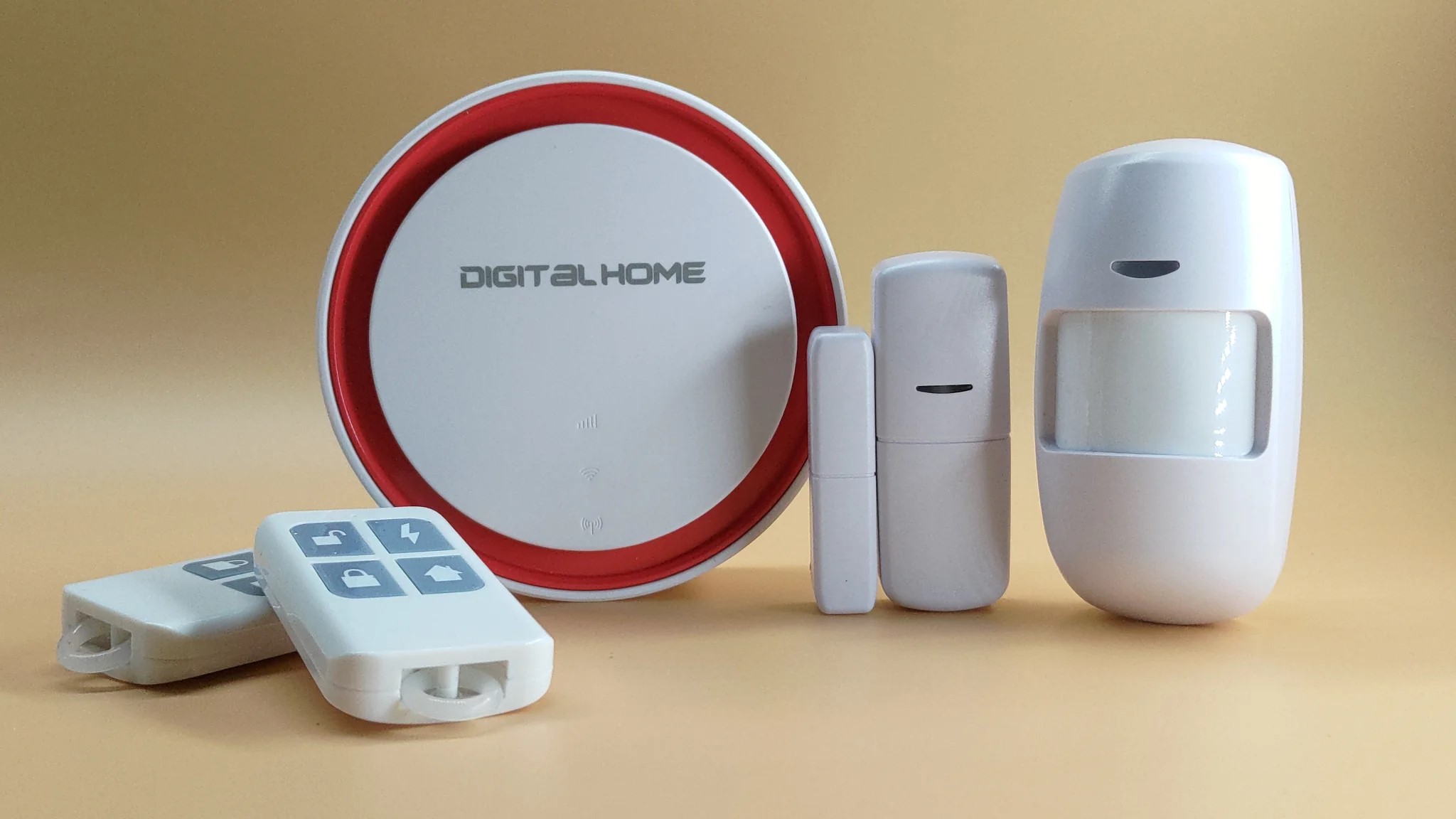

0 thoughts on “What Systems Get Put To Work When Building A Home?”